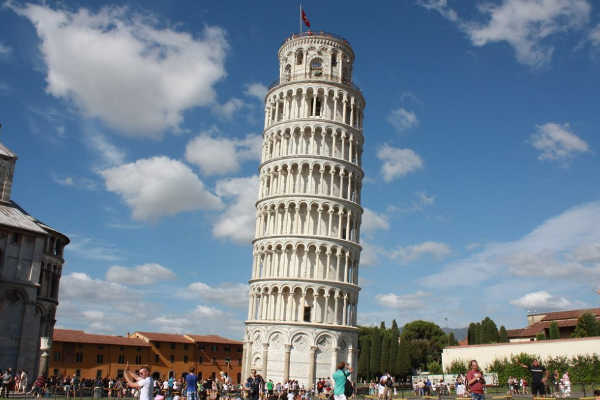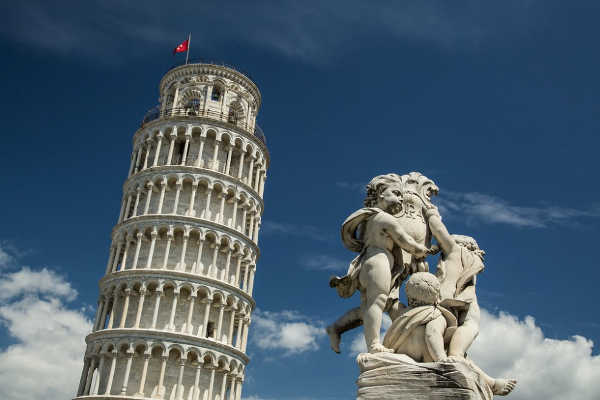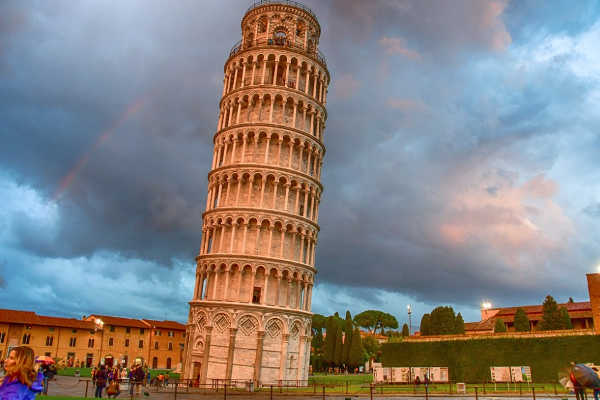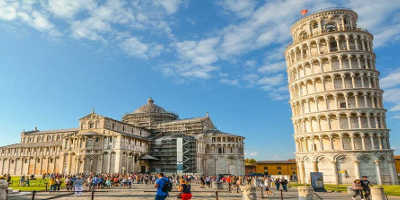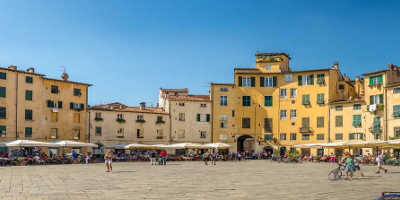The Leaning Tower of Pisa
Astounding scientists for centuries, this tilting tower certainly lives up to its name. Whether you climb to the top or gaze at it from below, a visit to Pisa’s most famous landmark will remain in your memory for a lifetime!
Pisa is a historical city that draws its fame from the gravity-defying Leaning Tower of Pisa with its distinctive tilt of 3.9 degrees. The splendid 57-metre-tall white tower rises from an emerald green lawn and is brilliantly master-crafted with columns and arches that place it amongst the most splendid examples of Romanesque architecture in Italy.
The uniqueness of the tower has gained the site UNESCO World Heritage status and has long fascinated visitors with its precarious position. The Tower has successfully puzzled engineers not just due to its unbelievable lean to one side but also because of its miraculous escape from the seismic movements throughout the centuries.
Why is the Leaning Tower of Pisa leaning?
Here we unravel the reason why the Tower leans towards south without toppling over.
Did you know that ‘Pisa’ is a Greek word meaning marshy land? Probably the city is named ‘Pisa’ as it sits on the alluvial soil composed of sand, clay, and shells close to the River Arno. Constructing a stable, gigantic monument requires a deep foundation. However, the base of the Tower was merely 3 meters deep and couldn’t support the weight of the mammoth monument, leading to the leaning phenomenon.
-
A blessing in disguise
As the tower began to sink on one side after the construction of the second story it became evident that the project was inevitably doomed. After this, the construction was stopped so that the engineers could work on the solution to correct the lean. This interruption of a century allowed the soil to compress under the tower’s enormous weight. If this long break had not occurred, then the Tower would likely have toppled over.
-
The corrective measure that worked
When the construction restarted, the next storeys were built slightly taller on the short side of the tower in an attempt to compensate for the lean. However, the weight of the extra floors caused the edifice to sink further, making it worse. The top floor was also placed at a different angle to offset the overall lean however this too was unsuccessful. If you look at the tower now you will notice its banana-like shape that is evidence of the measures taken to try and correct the tilt. Despite the continuous commitment to correct the architectural flaw, the tower continued to tilt by 1 mm each year until recent years when a restoration program successfully decreased its inclination.
In the 1990s, the angle of lean had reached 5.5 degrees, and, for the first time, it was closed to the public. A solution had to be found as soon as possible, so a technique called the ‘corset and the crutch’ was utilised. This essentially comprised of a metal structure placed around the most vulnerable section of the tower, with 10-tonne lead weights placed on the ground on the northern side to create a counterbalance.
When a more permanent solution needed to be found, engineers began trying different techniques. They injected mortar between the inner and outer walls, created a drainage system so that the water table wouldn’t change, they placed huge weights 45 metres below the ground and they even froze the surrounding earth. But nothing worked. Finally, after tying the tower to the nearby cathedral and placing massive weights on the northern side, they found their ultimate solution. Over a year, they dug 100kg of earth from the foundations of the northern side of the tower and, miraculously, it worked!
-
The irony of the Leaning Tower
Interestingly, the same soil that caused the leaning of the tower can be credited with helping it survive this long. Four large earthquakes are said to have hit the region since 1280 with one registering at over 6.0 on the Richter scale, so how is the tower still standing? The phenomenon is known as dynamic soil-structure interaction (DSSI). Essentially, the vibrations caused by the earthquakes travel differently through the soft soil, effectively absorbing the shaking and allowing the tower to remain upright.
What was the tower originally built for?
With the leaning feature of the tower so well known, many people forget why the tower was built in the first place. Historically, the city of Pisa was an important seaport and as its wealth grew, the people of Pisa decided to construct a magnificent cathedral complex, the Field of Miracles. This comprised a cathedral, baptistry, cemetery, and of course, a belltower.
How you can see the tower today
Fortunately, due to the extensive restoration efforts, the Leaning Tower of Pisa can not only be seen but also climbed! Tickets can be bought in advance or on the day. As you climb the tower you will feel the tilt as you walk across both the northern and southern sides. It can be a slightly unnerving experience, but it is certainly worthwhile. From the top, you will be able to see the bell and enjoy the fantastic views of Pisa. Look over the luscious green lawns and elegant Duomo and gaze across the red-roofed city buildings to the hills and countryside beyond.
Knowing about the history of the tower and its infamous lean certainly makes you appreciate the site more when you come to visit it. Rest assured that the tower should be stable for at least the next 200 years so go and see it, enjoy its unmatched beauty, and if you’re feeling brave, take a trip to the top.

